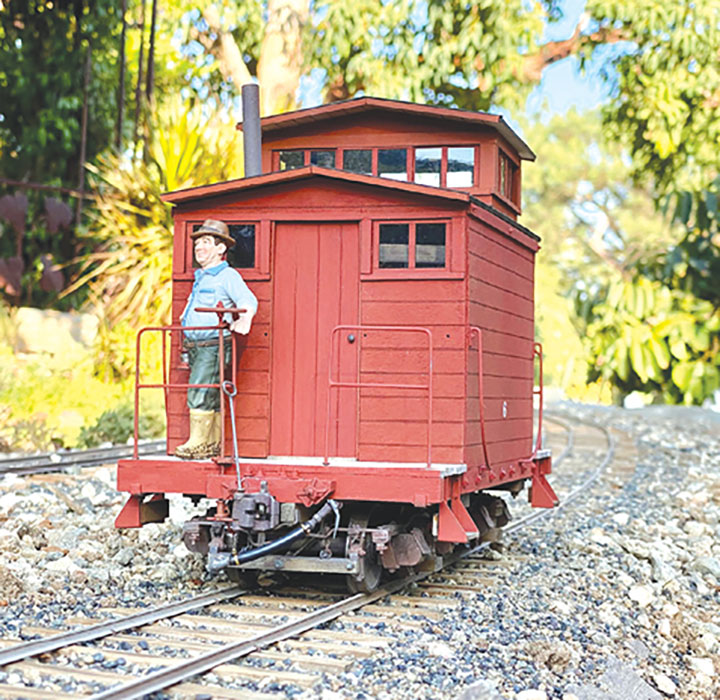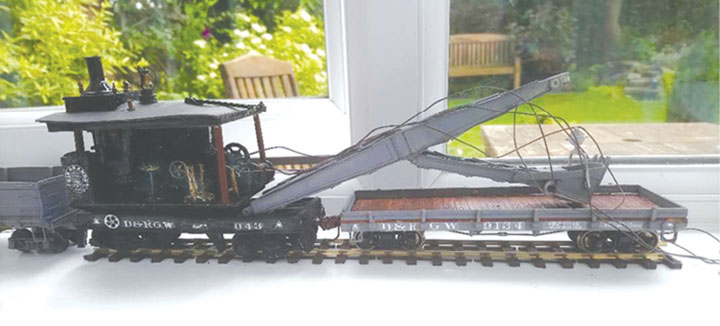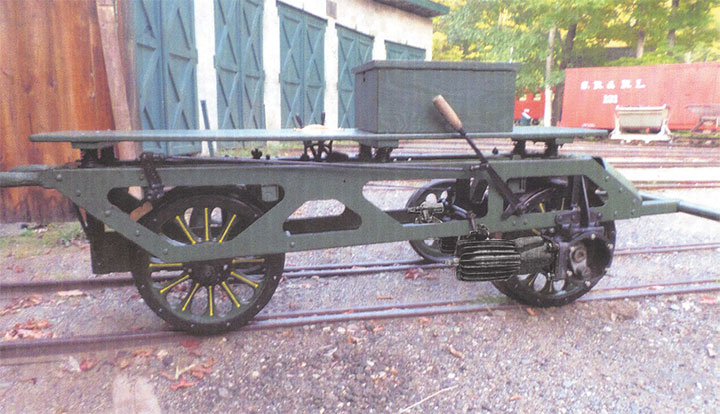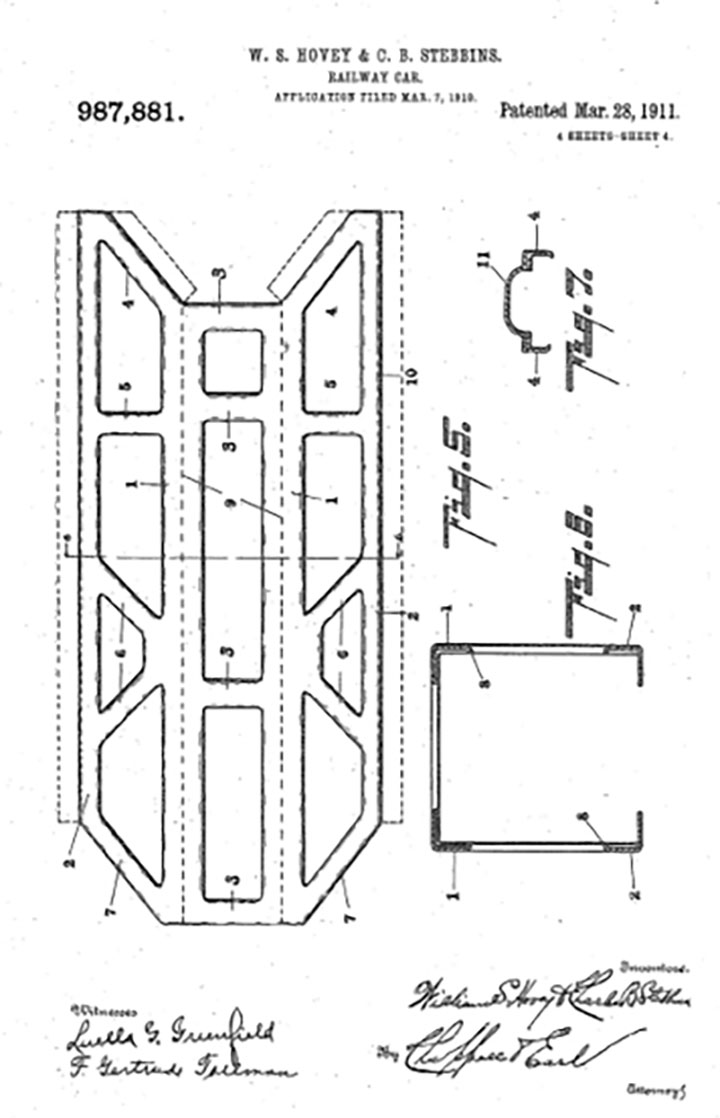
Dear Bob,
I used your photo of the West Side Lumber Company caboose on page 6 of the July/August GAZETTE, along with a Lee Klaus drawing to build a 15mm scale Hartford Products kit. The photo shown here shows my model posing on my North County Narrow Gauge here in San Diego.
Bob Hartford, Terry Van Winkle and I collaborated on nine California models and parts including, at last, a correct West Side brake wheel. Fortunately most of the parts and files for these models are now with Gazette advertiser Don Niday’s F-Scale Iron Creek Shops. They include SP Owens Valley, C&C, Bodie, Mono Commercial, Lake Tahoe, and North Pacific Coast.
I recall a photo of you standing in the door of West Side caboose #5, which inspired my model of that interesting caboose.
Many thanks for the years of inspiration.
Sincerely,
Rob Teates, via email

Dear Bob,
I have just built a large scale D&RGW Ditcher and boom car. I decided, because of problems obtaining decals, to number it #043. I just received my July/August 2021 Gazette and found Herman Darr’s drawing of the boom car used on Ditcher OW. My boom car is based on a Bachmann flatcar and is 5-feet too short, but then my Ditcher is #043.
Sincerely,
William Longley-Cook, via email

Dear Bob,
Some background and a question. The car in the color photo is a SR&RL Fairbanks purchased about 1912. Its remains were in the Phillips coal shed until salvaged by the late Leslie Spear. I got the pieces from Wesley about 1981 and put it all back together, with a further restoration in 2017. The photo is a composite. The car is missing two gas cylinders.

I have included page 3 of the 1911 patent for a one-piece pressed steel frame.
As the car was found, one-third of the steel pipe front handle was missing like it had been wrenched off. This leads me to believe this was the car Roadmaster Walter Toothaker was riding when he had the cornfield meet with locomotive #15. He was laid up for three months.
A visitor to Phillips, while talking to then President Tom Moore, mentioned that only six cars were built to this design and that this was the fourth or fifth he had seen.
My question to GAZETTE readers is, does anyone know the other cars? If so, where and what gauge? No one thought to get the fellow’s name.
Anyone with an answer can contact me at ahoughton2@verison.net.
Sincerely,
Al Houghton, via email

Dear Bob,
Recently, I finished an upcoming review model of a Berkshire Valley HO scale Haberdashery Store. Wanting to create a window display, I turned to my favorite source of HO fedoras — eyelets. These eyelets are sold in sewing and fabric stores. As my photo shows, these eyelets resemble top hats and come in a variety of colors. To keep as a top hat, I cover the top with a paper disk and paint it black.
However, when crimped with needle nose pliers at the top, they instantly become a fedora and the crimping even creates a curved brim. Though perhaps slightly large for HO scale, they serve the function in window displays.
Eyelets come in different sizes, and I have also found sizes perfect for S and O scales. I use the smallest size for HO.
Sincerely,
Charlie Getz, via email
Dear Bob,
Your Robert’s Ramblings in the July/August issue about your visit to the West Side Lumber Co. in the 1950s sure brought up some fond memories for me from 60 years ago! Some friends and I discovered West Side in the early 1960s, packed up our camping gear, and made the pilgrimage one summer from San Diego. By the time we got to Tuolumne, California, it was late afternoon. We drove up the Forest Service road to the long siding at the railroad’s Camp 21, where we learned the “up” train, bringing the empty skels from the mill, and “down” trains with the loads from the current cutting site, would meet to exchange their cars.
The planned meet was expected sometime around midnight. We arrived at Camp 21 before dark and wasted no time pitching our tents and crawling into our sleeping bags to await the arrival. It was a dark moonless night, deep in the forest. Not long after, Shay #8 with its string of empty skels rattled into sight and dropped its cars, to be hauled back out to the cutting site. A few hours later, the bright headlight on the arriving woods engine, #14, interrupted our slumber and we piled out to watch the required switching moves.
The empties left first, behind #14, allowing the mill train to prepare for its long descent to Tuolumne. Veteran engineer, Carl Wyhlidko, climbed down from #8’s cab with his kerosene inspection torch and began his ritual of checking the running gear of his charge, under the illumination of his torch. (For the uninitiated, these simple illuminating devices consisted of a spouted metal pot for the kerosene, and a wicking material stuffed in the spout to provide an illuminating flame.)
While the hogger was thus distracted, I chose the moment to ask him if we could take a short ride in the cab once he was finished with his brake test and ready to depart. After he double-checked with his fireman, we were invited into the warm sanctum of the Shay’s cab. Since we would have to hike back to my truck after the ride, I asked that we be dropped off about a mile down the track. What an experience! Way too soon, we were bidding our farewells to our gracious hosts and picking our way back along the track to my truck in almost total darkness!
Sincerely,
Dick Pennick, via email
Thanks for that wonderful story, Dick!
Ed.